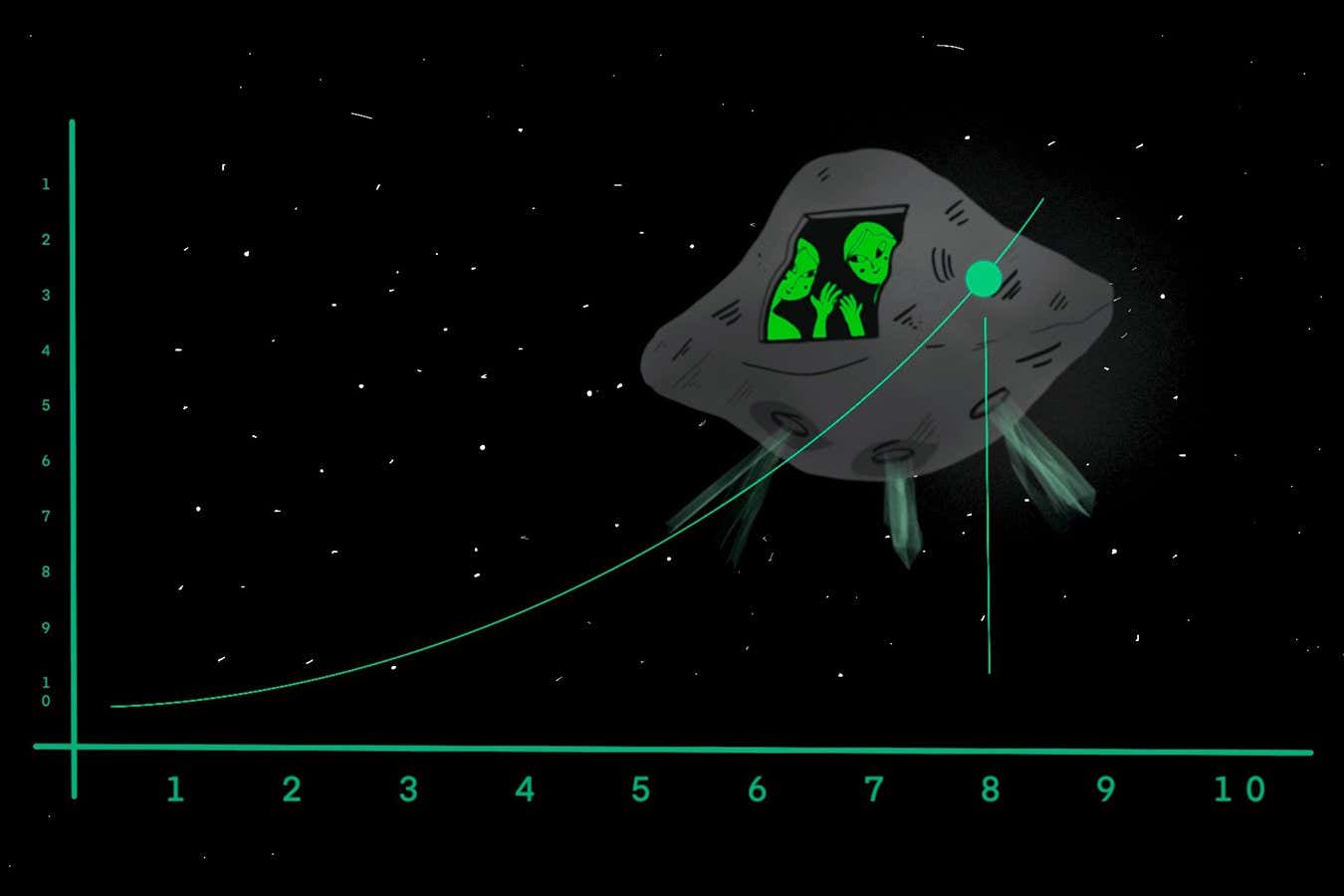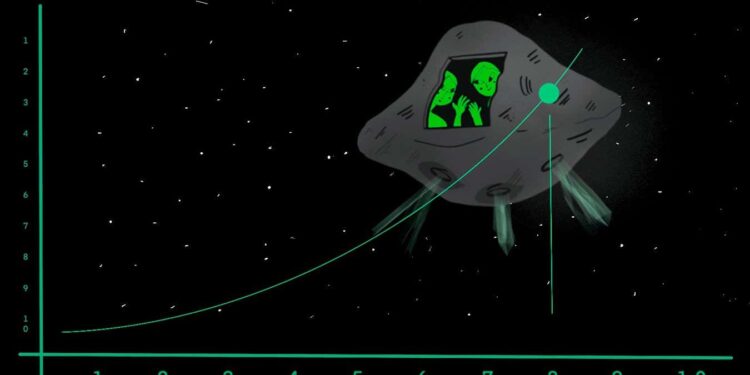
Feedback is New Scientist’s popular sideways look at the latest science and technology news. You can submit items you believe may amuse readers to Feedback by emailing [email protected]
In the name of…
One of science’s greatest honours is to have something named after you. For example, geographer Alexander von Humboldt is remembered by a penguin, a Californian county, a mountain range and so much more.
Congratulations, then, to Harvard astronomer Abraham “Avi” Loeb, after whom a new scale may be named. Loeb, a regular in New Scientist, has spent much of the past decade considering the nature of interstellar objects passing through our solar system. The first was ‘Oumuamua in 2017; this year, comet 3I/ATLAS dropped by.
Loeb attracted a lot of attention by arguing these objects might be artificial: probes or craft of some kind sent by extraterrestrials. His claims have, to put it politely, not convinced many of his fellow astronomers. The scepticism was compounded in 2023, when Loeb claimed to have identified pieces of an interstellar meteor on the sea floor. It turned out that seismic signals he said showed a meteorite impact were probably from “a moving vehicle traversing the road next to the seismometer”.
Still, interstellar objects will keep popping up now that we can spot them, justifying the need for the scale proposed in a preprint. It is intended to classify such objects by how likely they are to be artificial, and if they are going to hit Earth. The scale ranges from 0 (an object “consistent with known natural phenomena”) to 10 (an object of “confirmed extraterrestrial artificial origin” and an “impact trajectory with global terrestrial consequences”).
Feedback is mildly confused, as the scale appears to be measuring two things at once – and that isn’t how scales work. If we ignore the impact stuff, the scale at 8 and above signifies that an object is definitely ET. The interesting stuff is in levels 2 to 7, which cover ever stronger evidence of artificial origin, from “non-gravitational acceleration” and “unusual shape” to “signs of being operational” and “responsive behavior”.
Feedback is a little unclear just how we would decide some of these. Take the unusual shape of a space rock. Famously, Mimas, a moon of Saturn, looks like the Star Wars Death Star, but it is no space station. It is also hard to tell artificial electromagnetic signals from natural ones, hence the large number of alarms about alien radio messages.
It all seems a bit fuzzy, so Feedback decided to check out the creators of the Loeb Scale. Two are sports psychologists at Reichman University, Israel, who are evidently branching out. The third is, er, Loeb.
Dog utility vehicle
Feedback has often mused about unusual units of measurement, such as whether we can measure the rate of information transfer using a snail carrying a DVD.
Reader William Dockendorf emails to tell us about a wholly new one, and this will take some unpacking. There is apparently a new make of car in the US called a Slate. It is “a two-door electric pickup truck” that can be “customized again and again to transform into whatever you need it to be: even an SUV”. Dockendorf notes that this is a configuration that “approximately no one will probably buy”.
On the company’s website, slate.auto, there is a long page of FAQs. One asks: “How much junk can I fit in the frunk and the cargo bed?” Before you ask, no, “frunk” isn’t a typo: electric vehicles often have a storage compartment at the front, so it is a “front trunk”.
Anyway, the measurements are given in feet and cubic feet, listing what William calls “relatively generic things” like a “55 in. flat screen TV (in the box)” that will fit on the cargo bed. But then it says that the cargo bed will also hold “about 30 dachshunds”.
Williams says he now feels “a need to measure everything in approximate numbers of dachshunds”. Feedback wants to know if these are live dachshunds, or something less space-filling like dead dachshunds, freeze-dried and packed together like sardines.
Latest farts
After learning of the Flavor Analysis and Recognition Transformer (FART), we asked for more examples of high-quality acronyms – or, at least, hopelessly contrived ones. What follows is a selection from the deluge of emails. This will become a recurring item, at least until morale improves.
First, Thomas Kläger writes of the Regional Bus and Rail Company of Ticino, the only Swiss canton where Italian is the sole official language. In this tongue its name is the Ferrovie Autolinee Regionali Ticinesi SA. Feedback can confirm this is real, and that its official website is the delightful fartiamo.ch.
Years ago, physicist Paul Davies says he attended the opening of “an Australian-Japanese cosmic ray experimental set-up” near Woomera in Australia. This was the Collaboration between Australia and Nippon for a Gamma Ray Observatory in the Outback, also known as CANGAROO. “Full marks for creativity,” says Davies.
But the last word must go to palaeoanthropologist John Hawks, who wrote on Bluesky (we don’t even think he had read Feedback) about a paper he found in The American Journal of Human Genetics. It describes “a method for estimating mutation rates and recent demographic history from very large samples”. By “very large”, the authors mean a dataset of a million genomes. Naturally they called their tool “Diffusion for Rare Elements in Variation Inventories that are Large”, or “DR EVIL”.
“Well played,” says Hawks. To which Feedback can only add: “Yeah, baby!”
Got a story for Feedback?
You can send stories to Feedback by email at [email protected]. Please include your home address. This week’s and past Feedbacks can be seen on our website.
Source link : https://www.newscientist.com/article/mg26735601-600-telling-incoming-aliens-from-space-rocks-on-a-scale-of-1-to-10/?utm_campaign=RSS%7CNSNS&utm_source=NSNS&utm_medium=RSS&utm_content=home
Author :
Publish date : 2025-09-10 18:00:00
Copyright for syndicated content belongs to the linked Source.









